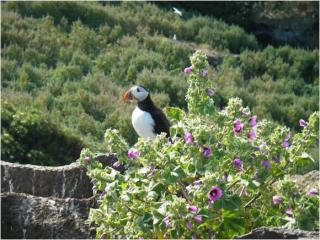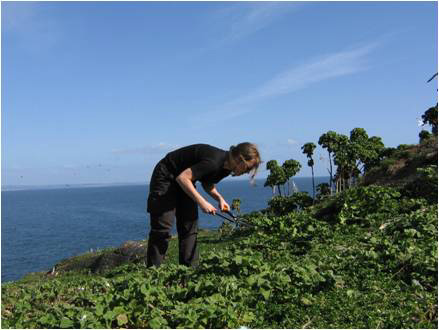Public Views on Biodiversity Change: The Role of Invasive Non-Native Species
Published on 2 August 2010 in Ecosystems and biodiversity

Introduction
Worldwide there is growing concern among policymakers and conservation biologists over the impact of invasive non-native species on native biodiversity and ecosystems, reflected by an increasing number of policy documents that refer to biological invasions and numerous examples of conservation action aiming to reduce impacts of such invasions. However, little is known about the public perception of invasive non-native species: What do ‘invasiveness’ and ‘nativeness’ mean to the general public? Which characteristics of species do members of the public draw on when discussing their views about biodiversity management? Does non-nativeness matter?
Key Points
.jpg) We examined the characteristics that members of the public in Scotland draw on when discussing animal and plant species and biodiversity management. Through qualitative methods, we were able to identify recurrent arguments in people’s discussions with us, expressed in their own words rather than necessarily in scientific language. These included attributes such as a species’ harmfulness, role and importance in the system, dominance and suppression of weaker species, endangeredness, uniqueness, and to a limited degree also non-nativeness. While invasiveness was often not directly mentioned, many study participants alluded to the phenomenon by speaking about harmfulness, dominance and recent population increase. The role of humans in fostering biological invasions was another important argument brought forward by our participants: The need for active biodiversity management was generally considered as more urgent and legitimate where humans were seen to have introduced a species, or contributed to the imbalance of a situation.
We examined the characteristics that members of the public in Scotland draw on when discussing animal and plant species and biodiversity management. Through qualitative methods, we were able to identify recurrent arguments in people’s discussions with us, expressed in their own words rather than necessarily in scientific language. These included attributes such as a species’ harmfulness, role and importance in the system, dominance and suppression of weaker species, endangeredness, uniqueness, and to a limited degree also non-nativeness. While invasiveness was often not directly mentioned, many study participants alluded to the phenomenon by speaking about harmfulness, dominance and recent population increase. The role of humans in fostering biological invasions was another important argument brought forward by our participants: The need for active biodiversity management was generally considered as more urgent and legitimate where humans were seen to have introduced a species, or contributed to the imbalance of a situation.
Research Undertaken
 Over the last five years, we conducted four studies into public perceptions of and attitudes towards animal and plant species. These addressed biodiversity management in Scotland’s upland as well as coastal regions, and also included comparisons with seven other European countries, ranging from Romania to the Netherlands.
Over the last five years, we conducted four studies into public perceptions of and attitudes towards animal and plant species. These addressed biodiversity management in Scotland’s upland as well as coastal regions, and also included comparisons with seven other European countries, ranging from Romania to the Netherlands.
While two of these studies were qualitative, involved group discussions and thus allowed us to gain a deeper understanding of meaning, the other two studies were quantitative, drew on questionnaire-based surveys (n=249 for a case study on the East Lothian Coast; n=2347 for the European survey) and provided estimates of the relative importance of certain arguments in shaping people’s views. Findings from the Scottish sample were not significantly different from those of other study sites.
Policy Implications
Our main findings suggest that
- human responsibility for biological invasions is a key argument in the public discourse on biodiversity change
- invasiveness – through the ideas of dominance, recent population increase and harm – is a concept that relates well to public views, whereas non-nativeness does not.
Author
Dr Anke Fischer, Sebastian Selge and Dr René van der Wal a.fischer@macaulay.ac.uk







